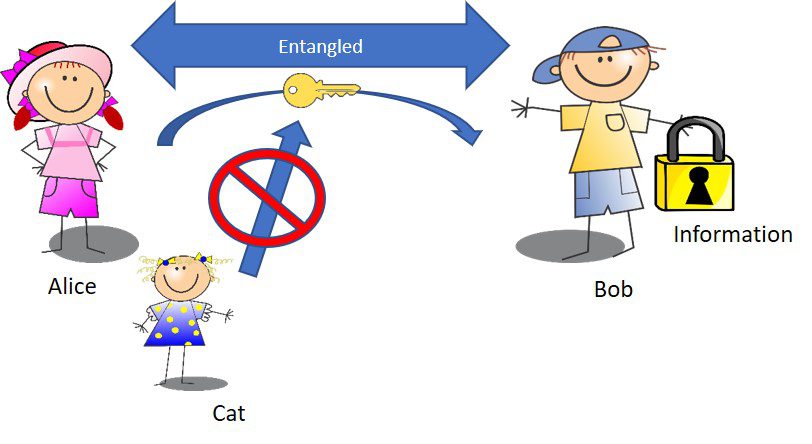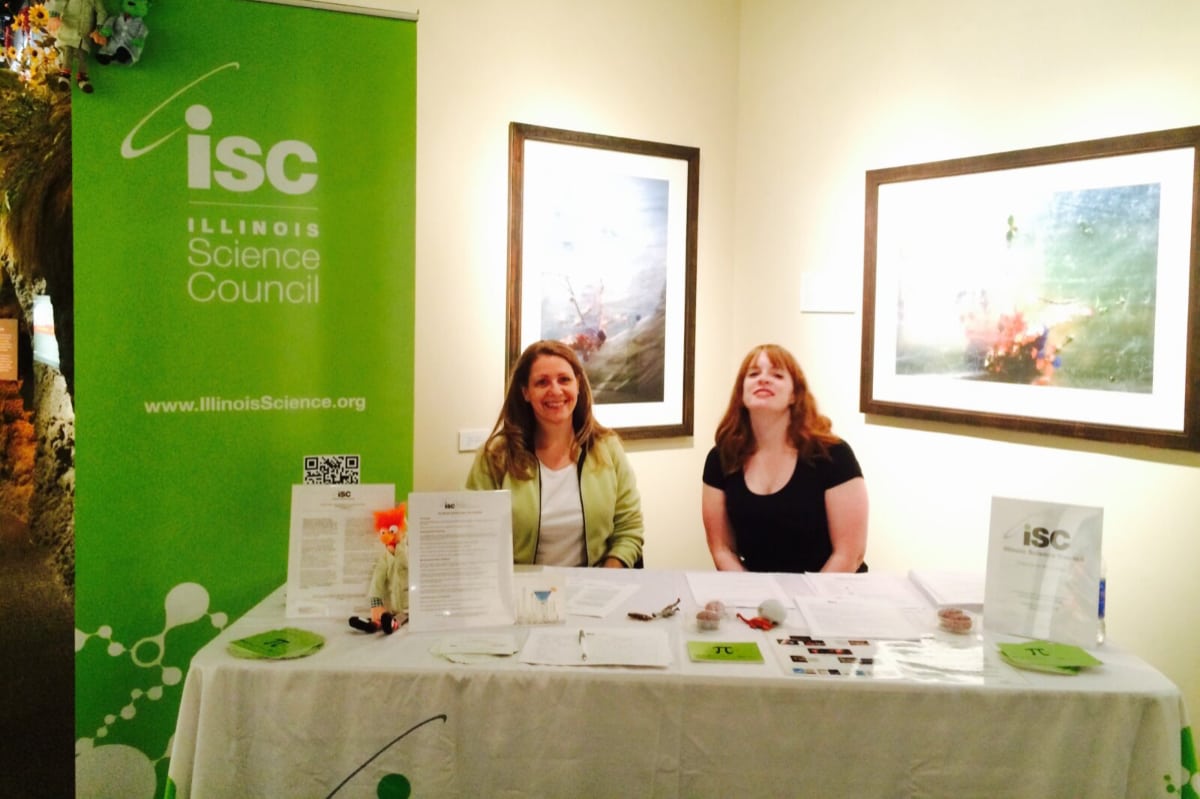If you reach into your back pocket or bag, a small device likely hides in the depths. Perhaps you’re holding it right now, using its screen to read these words. Of course, I’m referring to the cell phone which 92% of Americans now possess. This tiny device has utterly revolutionized our concept of communication and catapulted us into a new digital age in only a few decades—but also into an era of digital insecurity as millions per year are hacked through smartphone apps or other security compromises. As a result, industries and researchers have begun to explore the possibility of using fundamental laws of physics to create an impenetrable communication system.
Our current technology has been called the ‘semiconductor era,’ characterized by our increasing ability to create smaller and smaller electric devices on the material silicon. The first steps were taken 70 years ago, when the electric building block of all modern electronics, the transistor, was invented at Bell Laboratories. This first transistor was over 6 inches in length, 4 inches in depth—the size of a brick—and around 50 dollars per unit. Compare that to the current conventional computer chips of 2019, which house more than two billion transistors, each only around 14 nanometers in length. As a scale of reference, devices have shrunk from the length of your palm to 10,000 times thinner than a single hair!

On the left, a replication of the first transistor ever built, and on the right, an image of current transistors in computer chips. Image credit: John Mayo (left) and Intel (right).
Industry now pursues even smaller devices, leading us to stand on the edge of a new revolution and ‘quantum era.’ The word ‘quantum’ describes phenomena or objects which are so small that, at their scale, our common sense understanding of the world breaks down. Here, weird things happen. Really, really, really weird things—like things being in two places at once. In fact, if our daily lives reflected this weirdness, a single ball might be in both of your hands at the same time. Another strange thing is how quantum objects can ‘talk’ to one another. Normally, it takes time to communicate—think about when you have an annoying lag over Facetime or Skype. The lag is because of the time needed to send the audio and video to the recipient. But in the quantum realm, certain objects can communicate instantaneously and without fail.
To better visualize this, imagine two good friends named Alice and Bob. They are playing a game in which they pull colored balls out of two identical jars with an identical number of balls. In each jar, half of the balls are red, the other half blue. Alice and Bob are in separate rooms and cannot communicate. They are given a signal at the same time to pull out a ball and record its color. They then guess the color of the other person’s ball. Our common sense tells us that the color of Alice’s ball does not depend on that of Bob’s. So, we might find that sometimes Alice guesses Bob’s color correctly and sometimes Bob guesses Alice’s. Sometimes they might both be wrong, or both be right—the results should be random, after all.
But if the balls are specially prepared quantum balls (maybe made by those companies that can make those tiny transistors), Alice and Bob will find that there is a very specific relationship between the colors that they get. In the quantum version of this game, if Alice has a blue ball, Bob must have a red one, and if Alice has a red one, then Bob must have blue. Alice now concludes she can know Bob’s ball’s color with absolute certainty once she knows her own, and so can Bob! This phenomenon is called ‘entanglement’ and Alice and Bob’s balls are referred to as ‘entangled.’ Hmmm…sounds rather promising for communication!
But the weirdness doesn’t stop here. Now, let’s say Alice has a younger sister called Cat. She’s been watching her older sister and Bob play this game for a while now, and she really wants to play as well. So, when Alice and Bob aren’t paying attention, Cat sneaks a ball out of the jar, peeks at its color, and puts it back. Now, when Alice and Bob repeat their quantum game, they will be shocked to find that their results no longer have the perfect relationship that they had before. Somehow, Cat’s act of looking at the balls has messed things up, and Alice and Bob can now scold Cat for disturbing their game.
As silly as this game seems, this idea seems a lot more sinister if we consider if Alice was using this game to transmit her bank account number or if Alice and Bob were communicating confidential national secrets, and Cat, being a malicious hacker, is trying to gain access to that information.
Suddenly a lot less innocent, right?
Because entanglement allows someone to detect when an intruder tries to peek into the ‘games’, industries and national researchers are very interested in the communication applications of quantum physics. Although researchers have not yet figured out how to communicate information directly with quantum entanglement, they have found that this phenomenon is useful for communicating the ‘key’, or super complicated password, to encrypted information. In fact, these sorts of keys are exactly what keep many sorts of digital information safe, such as your bank account or email. In this way, an authorized sender can send the information for the key to the authorized receiver and then only the specific receiving individual will be able to access the coded information. This process is referred to as ‘quantum key distribution.’ Using this quantum technique, companies, nations, and individuals can create an ultra-secure internet network, protected by quantum physics itself.

A schematic of quantum key distribution. Using entanglement, Alice is able to communicate a key or password to Bob who has coded information. Cat is not able to access this key and therefore cannot unlock the information. Image credit: Hope Lee.
Within the last 20 years, there have been milestone progress in the field. It has been proven that Alice and Bob’s game can be extended to long distances, with the current record on Earth at little over 60 miles and with demonstrations of it being possible between Earth and space. There are also various initiatives to develop a ‘quantum internet,’ an overhauling upgrade in security to our current internet. A leading pioneer of this project is the Quantum Internet Alliance, a multinational European research collaboration. Here at home in the Midwest, the UChicago Institute of Molecular Engineering, Argonne National Laboratories, and Fermi National Laboratories have also begin developing a ‘Quantum Link’ to test these long-distance communication networks. The implications of these breakthroughs are predicted to be consequential, with legislators at the national level taking notice. Last year, Washington legislators drafted the “National Quantum Initiative” in an attempt to bolster America’s competitiveness in quantum progress.
Given the breakneck pace of technological progress in the last two decades, it is very hard to predict which new advances will emerge in the coming years. What we do know is that these new innovations will bring about a new era of secure communication that is currently unprecedented. Who knows what new forms of communication might emerge from these technological breakthroughs? Let’s talk quantum.
Hope Lee’s article is part of a collaboration between the Illinois Science Council and the University of Chicago.
-
Hope Lee is a student at the University of Chicago studying Physics and Molecular Engineering. She works in Professor David Awschalom’s lab, where she conducts research on quantum communications. In her spare time, she enjoys Japanese animation and making costumes for comic conventions.
View all posts








